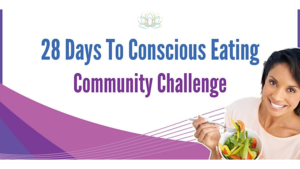A Story of Healing and Transformation with Ho’oponopono
In the heart of the Pacific, on the lush islands of Hawaii, an ancient practice of reconciliation and forgiveness called Ho’oponopono was born. This healing modality, which translates to “make right” or “correct an error,” was traditionally used by Hawaiian families to resolve conflicts, release grievances, and restore balance to relationships. As a communal process, it involved an elder or kahuna guiding family members through prayers and confessions to clear negative energy. Ho’oponopono was much more than an emotional cleansing—it was a spiritual reset.
Though it remained largely a Hawaiian practice for generations, the wisdom of Ho’oponopono eventually traveled beyond the islands, becoming known across the globe as a powerful tool for self-healing. The journey to its widespread recognition begins with the modern interpretation of Ho’oponopono—a form of self-cleansing developed by a Hawaiian psychologist, Dr. Ihaleakala Hew Len, and the story of how his work came to light through Dr. Joe Vitale.
The Four Sacred Mantras (plus a 5th) of Ho’oponopono
The practice of Ho’oponopono in modern times revolves around four simple but profound mantras that are repeated silently or aloud to clear negative energies, not only in relationships with others but within oneself. The four mantras are:
- I’m sorry – Acknowledging responsibility for any unconscious or conscious disharmony that one may have caused.
- Please forgive me – Asking for forgiveness from the Divine, oneself, and others for the mistakes that contributed to the suffering.
- Thank you – Offering gratitude for the opportunity to heal, and for the process of release.
- I love you – An expression of unconditional love, which helps to restore balance and heal on a deep, spiritual level.
These mantras are based on the understanding that all problems—whether external or internal—are rooted in memories or programs running in the subconscious mind. By repeating these mantras, an individual can cleanse the memories and restore harmony.
The Addition of the Fifth Mantra: “I Forgive Myself”
In recent years, a new mantra has emerged within the Ho’oponopono community, acknowledging a deeper layer of self-forgiveness that often goes unaddressed. The fifth mantra is:
-
- I forgive myself – Recognizing the need to let go of guilt, shame, or self-blame. This mantra adds a deeper layer of healing, particularly in the context of self-compassion and personal liberation. The logic behind it is that many people, while seeking forgiveness from others or the Divine, often forget to forgive themselves. By incorporating this mantra, the practice becomes more complete, addressing every aspect of self-healing.
Dr. Hew Len and the Criminal Mental Ward Miracle
The world became aware of the transformative power of Ho’oponopono thanks to the incredible story of Dr. Hew Len and his work at the Hawaii State Hospital. In the 1980s, Dr. Hew Len was assigned to a ward for criminally insane patients—a place where violence, chaos, and despair were rampant. The ward experienced a high staff turnover rate due to concerns about safety, as the patients were heavily sedated or restrained to control their behavior.
Rather than working with the patients directly in therapy sessions, Dr. Hew Len took a completely different approach. He never met with them face to face. Instead, he sat in his office, reading their files and using the Ho’oponopono technique to cleanse the negative memories and emotions within himself that contributed to their suffering. He would recite the four mantras while holding each patient’s file, asking for healing within himself as a way to affect change in others.
Astonishingly, as Dr. Hew Len continued his personal healing practice, the ward began to change. Patients who had once been considered hopeless started to recover. Many were taken off their medications, restraints became unnecessary, and eventually, the ward was closed because there were no more patients. This remarkable transformation attracted attention and led to questions about how this could be possible.
Dr. Joe Vitale and the Spread of Ho’oponopono
Dr. Joe Vitale, a well-known author and speaker on the Law of Attraction, heard about Dr. Hew Len’s miraculous work and was intrigued. How could someone heal others without ever meeting them? Vitale sought out Dr. Hew Len and asked him to teach the practice that had made such profound changes in the mental hospital.
Dr. Hew Len explained that the essence of Ho’oponopono is taking 100% responsibility for everything that happens in our reality. By cleansing the memories or “programs” within ourselves, we also cleanse them in others. This is because, according to Ho’oponopono, everything we experience is a reflection of our inner state.
Vitale was so captivated by this idea that he asked Dr. Hew Len to teach him and agreed to share it with the world. The two co-authored the book Zero Limits, in which they outlined how the practice of Ho’oponopono can bring people back to their natural state of “zero”—a state of no limitations, no programs, and pure Divine inspiration. The book became a bestseller, and Ho’oponopono gained global recognition as a tool for personal and collective healing.
Through workshops, seminars, and Vitale’s teachings, Ho’oponopono spread to spiritual communities worldwide, attracting people who were looking for ways to heal emotional wounds, restore inner peace, and create harmonious relationships.
Today, Ho’oponopono is practiced by millions of people around the world. Its message is simple: by taking responsibility for our inner world, we can change our outer reality. The power of forgiveness, gratitude, and love has the ability to heal not just ourselves, but the world around us. Through the dedicated work of Dr. Hew Len, Dr. Joe Vitale, and countless others, this ancient Hawaiian practice has become a modern-day path to peace and transformation.





